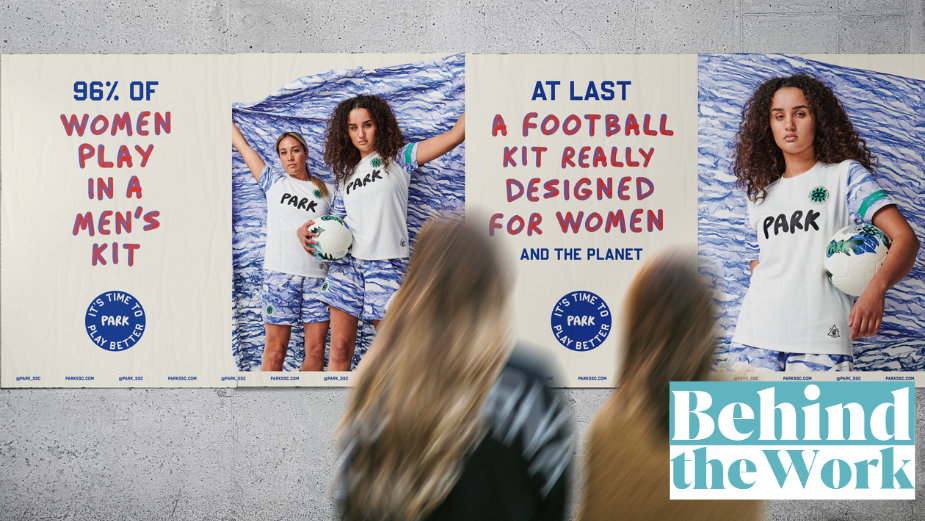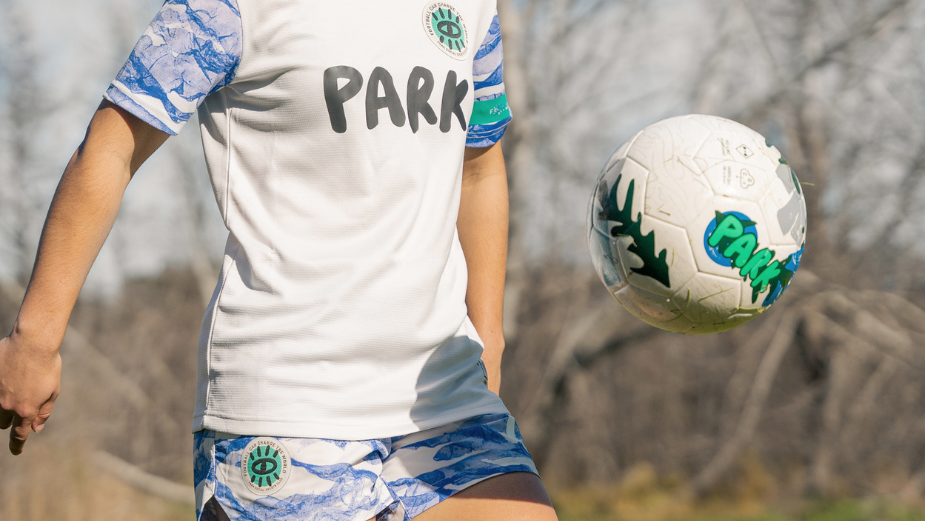
After the Women’s World Cup, Hopeful Monsters and PARK Are Creating Kits that Fit

There is nothing better than a good football game.
The nostalgia of being dropped off by your parents on a cold and foggy Saturday morning with a bag of frozen oranges in hand, ready to share with your teammates after the match.
The comradery that builds on and off the field. Team mates go from soothing grazed knees or twisted ankles to patching up wounds that have been made by something far worse than a footy boot or astroturf.
The unbelievable pride that swells in your chest the first time you wear a team jersey with your name on the back.
Over the past few months, the FIFA Women’s World Cup (WWC) has not only celebrated these wondrous joys of the sport, but have also highlighted the issues that women face when it comes to sport.
PARK is a football brand that partners with charities and organisations that, in its own words, aims “to level the playing field on initiatives that benefit refugees and people seeking asylum, at-risk youth, abandoned children and girls around the world.”
As an organisation, PARK took the opportunity presented to them during the WWC to raise awareness for the struggles faced by young girls, women and professionals. Partnering with Hopeful Monsters, an independent creative agency, the pair raised awareness for the 96% of Australian Women that are playing in football kits not designed for them.
Ill-fitting uniforms cause issues around performance, injuries, confidence and safety for women within the sport. To learn more about the initiative, LBB’s Casey Martin spoke with Hopeful Monster’s CEO Katie Barclay.
LBB> Women’s Sport has recently been on the forefront of everyone’s minds. With the Matilda’s smashing it in the World Cup, issues such as dropout rates and injuries are being addressed by the media. Talk us through how you approached the topic, and how do you hope this campaign evolves with all this attention?
Katie> When PARK first reached out and briefed us on the launch of their new women’s football kit, we were unaware of the scale of the problem. Naturally, we just assumed that women playing a sport they loved would play in a kit that fit. Tennis players do. Golfers do. Why should football be any different? But it turns out millions of women across the world have had to play in hand-me-down men’s kits or kits that don’t fit, impacting their performance, confidence, and even their safety. And the more players we spoke to, the more we realised the size of the issue.
Despite PARK being around for five years, and having this incredible vision - that football can change the world - they’ve largely flown under the radar. Launching around the World Cup on a relatively small budget with big global brands competing for attention, we needed to cut through with a bold message that made people sit up and take notice.
But with the big brands creating this perception that all female players got to play in well-fitting kits (through their World Cup ranges) most were oblivious to the problem - even with seven World Cup teams playing in white shorts.
We needed to communicate the issue (that 96% of women players still play in kits that don’t fit), but do it with a positive tone, in keeping with the theme of the World Cup. A rallying cry. A call to action. And so A Time to Play Better was born.
One month in, while the campaign has already generated a heap of interest, this is only just the beginning. We’ve been lucky enough to receive support from lots of influential people in the world of women’s sport, including Matilda’s players but the conversation around driving equality in women’s sport has only just begun.

LBB> What inspirations were on the storyboard for the campaign?
Katie> To be honest, most of the inspiration for the campaign came from speaking with actual players. The more stories we heard, the more we realised how ridiculous it was that women were still having to play in badly-fitting kits that impacted their game. Enough was enough. The campaign needed to draw a line in the sand.
Other than players, we also took inspiration from moments in football culture, specifically places we could show up authentically, in unexpected ways.
LBB> Why was it important to highlight real life stories from professionals and grass root players?
Katie> Chatting to players, we quickly realised the issue was one that affected women at every level. From Matilda’s and other World Cup players to grassroots clubs, so many had stories to tell about having to roll their shorts up, tuck their shirts in and put up with hand-me-down men’s kits. Real, raw and authentic, every story helped to show the severity of the problem.

LBB> Talk us through the design process for the kits and OOH. When collaborating with a brand, what is the first thing that you ask to understand the identity of the brand?
Katie> The OOH was unique. We looked at undervalued media in places where people were watching or on route to the games - like pubs, street posters, and the front of houses close to stadiums. By showing up authentically in places and ways that resonated with football culture, we were able to capture fans' attention far better than through traditional channels.
The design process itself was pretty easy as the brand identity was so strong.
LBB> Finally, what were the challenges and highlights? What did you learn?
Katie> In exploring undervalued media, we identified channels that were pretty unique - like advertising on the front of people’s houses. A challenge? Maybe. A highlight?
Definitely. Seeing the campaign messaging, ‘It’s time to play better’ hanging prominently at key junctions and high traffic locations at minimal cost was a win.
Other highlights included seeing media waking up to the problem and the reaction from players trying the kits on for the first time.
What did we learn? Perhaps what most other people in Australia learned over the last few months - that nobody could have predicted the Matilda’s fever that gripped the nation and how it would start this incredible conversation around women’s sport.













